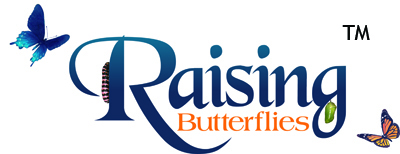Overwintering Techniques > Refrigerator
Using the refrigerator is an effective overwintering technique for pupae of swallowtails, whites, orangetips, some skippers and some hairstreaks and blues that naturally overwinter as pupa in temperate areas of the world. The amount of time you should overwinter your pupae depends upon the altitude and latitude of where your butterfly flies.
Because I live in Northern Utah, USA, my general rule of thumb is to overwinter my pupae for four months. This applies to collectors who are not releasing butterflies back into the habitat. However, if you are overwintering pupae with the intent of releasing it back into its natural habitat at an appropriate time, it is advisable to bring your pupae out of refrigeration two weeks before the butterfly is in mid flight or 1 week before the butterfly starts to fly. This may require a longer overwintering cycle than four months, which is fine.
You can place your pupae inside your refrigerator at any time as long as your pupa has been in hibernation for roughly one month. In the Northern Hemisphere, it is advisable to place your pupae in the refrigerator as early as late summer or as late as Thanksgiving. The goal should be to emerge the butterfly when its species is naturally in mid flight and you can release it into the right habitat at the right time. Butterfly flight times can vary from year to year or from season to season depending upon winter precipitation and/or the advancement of spring.
Misting pupae in the refrigerator is advised during the last 60 days of your overwintering cycle to simulate moist springs to encourage pupae to break hibernation and emerge. Some desert species of swallowtails, whites, and orangetips will extend hibernation over multiple years depending upon the severity of low annual precipitation. If your pupa does not emerge within one month after bringing it out, either it has died or has not broken hibernation. If it is alive, you can leave it at room temperature for another month and repeat the overwintering cycle.
The following photographs demonstrate how to overwinter pupae.
-
Indra Swallowtail Pupae in Squat Tub
After pupae pupate on paper towel, I cut out the pupa and tape it to the top of a 32 ounce squat tub. I cut a hole out of the lid and attach butterfly net material to create airflow within the squat tub. I keep the tub dry until the last 60 days of my overwintering cycle. During these last 60 days or so, I either mist spray water inside or I fill the tub with 1 inch of water. I check the tub every week to either spritz it with water or make sure there is water below.
-
Papilio multicaudatus pupae in Bucket
Pupae of Papilio multicaudatus (two-tailed swallowtail) attached to squat tub. Some pupae pupated on a stem; others on paper towel.
-
Papilio bairdi Pupae in Bucket
Western Black Swallowtail pupae in bucket; ready to overwinter.
-
-
-


